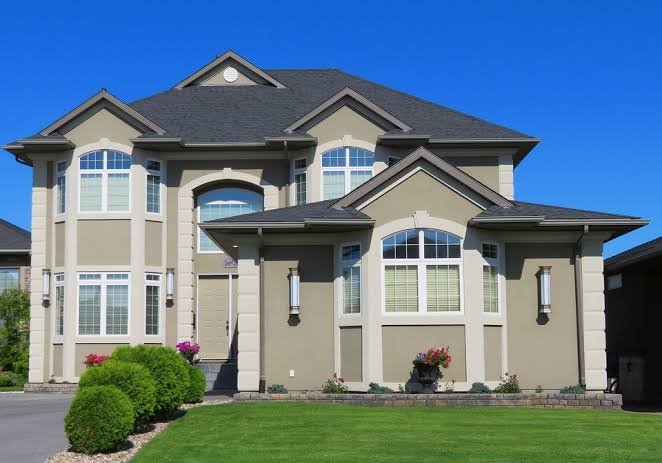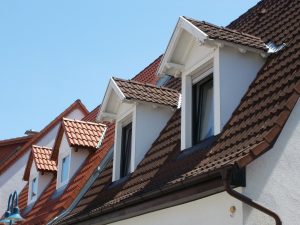Pressure washing is a great cleaning option for homeowners who want to remove loose paint, mold, dust, grime, or mud with little effort. Instead of scrubbing away at unwanted dirt on the exterior of your home, it’s faster and more effective to target hard-to-reach areas with pressure washing.
There are also numerous other benefits associated with pressure washing your house, office or parking lot. You can find a lot of reasonably priced pressure hoses on the market for anyone who is interested in DIY pressure washing a house. But if you’ve never used a pressure cleaner before, you may be unaware of which one to purchase and what water velocity is required to adequately wash the area concerned. If this is the case, follow the tips below before you attempt pressure washing your house.
What You Need to Know About Pressure Washing
Gas or Electric-Power Pressure Cleaner?
A gas-powered pressure washer is more ideal than an electric-powered one because it has a higher flow rate (GPM), which means that it’ll be much quicker to clean the area than using an electric-powered one. Although gas pressure cleaners are more expensive, they are worth purchasing if you don’t want to spend twice or sometimes three times as much time cleaning the same area. You will want the flow rate of your gas pressure cleaner to be at least 2.3 GPM.
Keep in mind, however, that higher flow rates will mean more pressure and too much pressure isn’t ideal. If you use a pressure washer that’s too heavy duty for the job, it might actually end up damaging your home’s exterior surfaces. Unfortunately, this means you might have to settle for a pressure washer with a low to medium pressure intensity. While this would be more versatile, you’ll find it challenging to clean areas like your driveway and sidewalk.
Which Nozzle Should I Use on My Pressure Cleaner?
Your pressure cleaner should come with numerous different colored nozzles which all serve different functions. Nozzles are often color-coded, so this is something you can look out for to understand your equipment better.
The red nozzle is the highest velocity nozzle that can cause damage to most materials. This nozzle is usually used to remove weeds from cracks in driveways. Next is the yellow nozzle, which is used to strip paint and clean concrete. The green nozzle is good for removing dirt from patio furniture and decks but the pressure is too low heavy duty jobs. The pressure of the white nozzle is even lower, so if you are unsure of the water velocity you’ll need, this is a good place to start and then work your way up from here.
The black nozzle is used to dispense soap or detergent, water is released at a 65-degree angle. Finally, there’s the turbo nozzle, which usually is either blue or black. It’s much larger than all the other nozzles and like the red nozzle, should be handled with extreme care.
Detergents and Brush Attachments
It’s recommended that when using a pressure cleaner, you use detergent as well. This can be used in conjunction with the black nozzle attachment. Using detergent will make cleaning easier because it’ll require less time to clean the area than it would if you were just relying on water pressure. It will also pose less of a safety risk because using soap or detergent means that you require a lower pressure to clean the area. Just make sure that you use the right detergent for the materials you are cleaning.
Using a brush isn’t required but it’s useful for cleaning malleable materials where you don’t want to risk using a higher pressure nozzle. You can also purchase an extension wand for hard-to-reach areas.
Pressure Cleaning Safety Tips
Practice great caution while using a pressure cleaner, as the high velocity at which the water is released from the pressure cleaner could damage certain less durable surfaces and items, or even cause bodily harm.
It’s recommended to use safety goggles at all times when using a pressure cleaner because if you end up on the wrong side of the hose for whatever reason, it could cause extreme damage to your eyes.
Another tip is to avoid using ladders while using a pressure cleaner, as the push-back from the hose could cause you to fall. For cleaning hard-to-reach places, rather use an extension wand to avoid any injuries.
It’s also important to clear the area of anything besides what requires cleaning. This is important because if you are pressure cleaning the exterior of your house you would use a nozzle that’s pressure is higher than the one you would use to clean patio furniture and may end up damaging it.
Checking if your property was painted with lead paint is also something you should determine before attempting to clean the area. If your house is really old, i.e. it was built before lead paint was banned in 1978, then chances are that it still has a coat of lead paint on it, even if it’s hidden beneath layers of modern paint. Lead paint is extremely poisonous, so it’s important that no animal or human ingests paint dust or chips by accident.
The Benefits of Pressure Washing A House
Pressure washing a house offers many benefits. It’s the fastest way to blast away dirt from exterior surfaces. Maintaining the cleanliness of your home is about more than just a clean appearance.
It Increases The Market Value of Your Property
When buyers look at the a property, they take in the whole property holistically. Houses that stand out are ones that are in pristine condition, exceptionally well-kept. Even if you home is in perfect working order, an unclean appearance will decrease its value in the eyes of potential buyers. Remember, buyers aren’t won’t know your home is up-to-date with all its maintenance, so the cleanliness of your property will serve as a good overall indication of how well your maintain other things.
It Prevents Damage to Your Property
While the cleanliness of your home might not be an accurate indication of how well-maintained it is, home buyers who judge overall property value based on cleanliness aren’t too far off! The exterior of buildings continually face harsh weather and man-made elements, all of which all contribute to an ill-kept looking property, but there’s more to it than just looks.
Moss, algae and mold growth can all cause permanent damage to your property if left unattended. Not to mention the fact that small cracks or other structural damages might be hidden under a layer of dirt.
It Reduces Allergies and Improves General Well-Being
The general upkeep of your residential or commercial property also helps to protect the health and well-being of the inhabitants of the building. By removing health risks such as mold or mildew, you minimize allergies and improve the air quality. This is especially beneficial if there are any asthma sufferers living in your house, but anyone can benefit.
It Helps Prepare Surfaces
When considering repainting or varnishing any surface, it is important to ensure that the surface is clean and free of any dust, dirt, or residue. This includes those hard-to-reach places such as cracks and crevices. Pressure washing will prevent your beautifully repainted surface from being tarnished as a result of painting over particles of debris. Without thorough preparation, your newly painted home exterior or deck simply won’t look renewed and the paint won’t last nearly as long. Painting over an unprepared surface is worse than not painting at all. Pressure washing is a great way to ensure the surface is clean. After pressure washing, you can continue to sand down and prepare the surface as necessary.
It’s recommended to pressure clean your property once or twice a year and while pressure cleaning equipment is available for hire, in the long run, it is often cheaper and safer to hire a pressure cleaning service to take the hassle out of doing it yourself.



